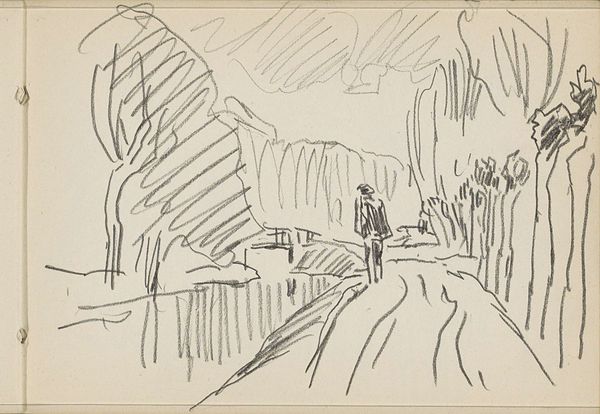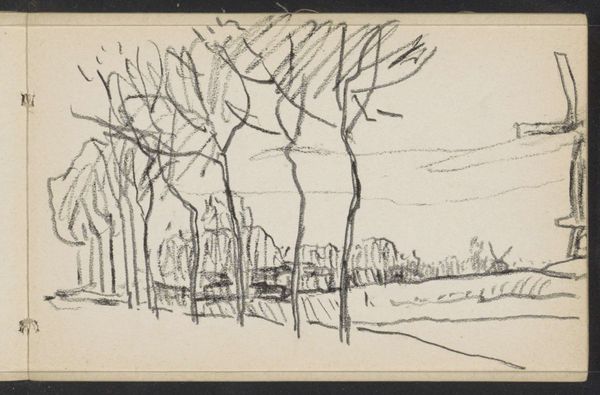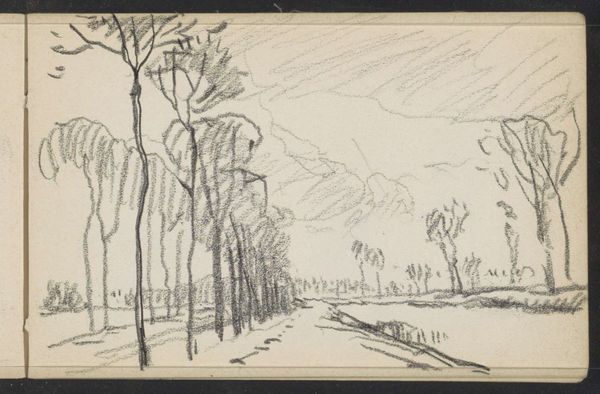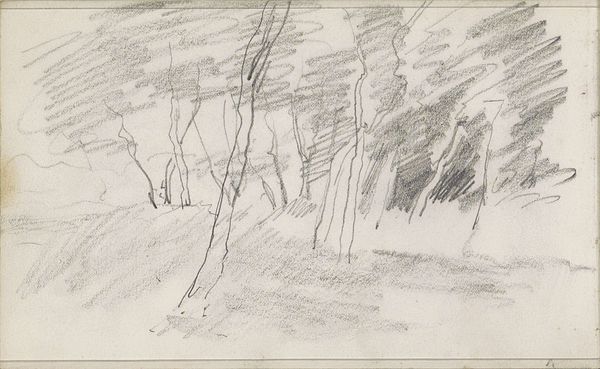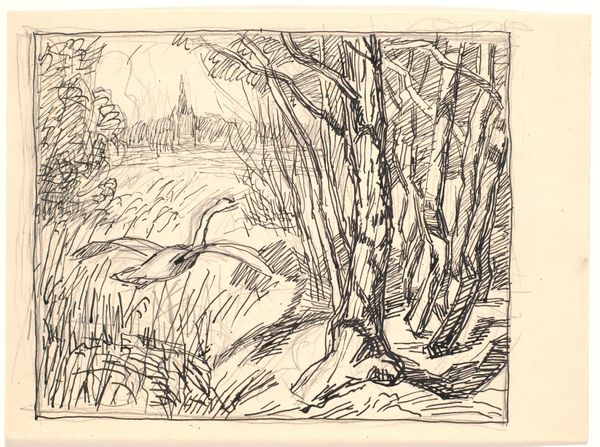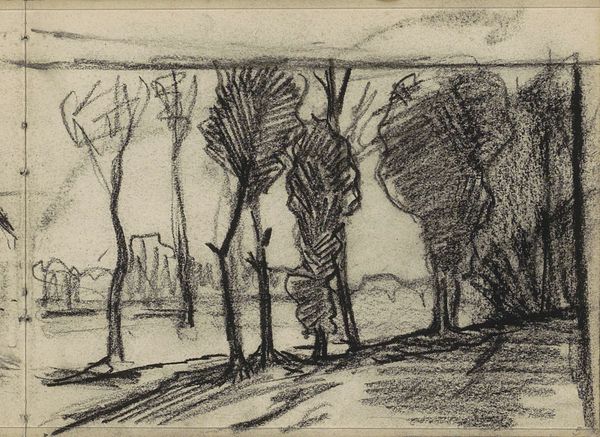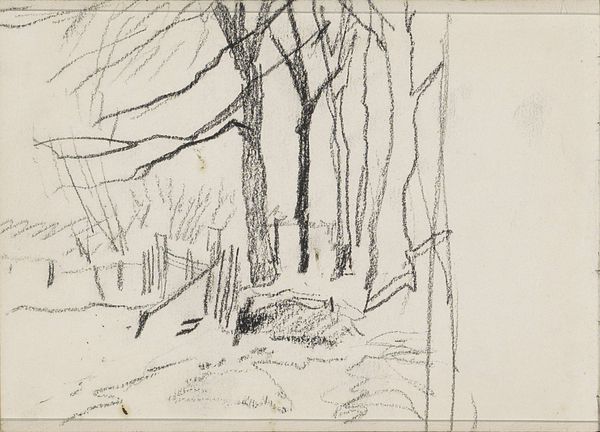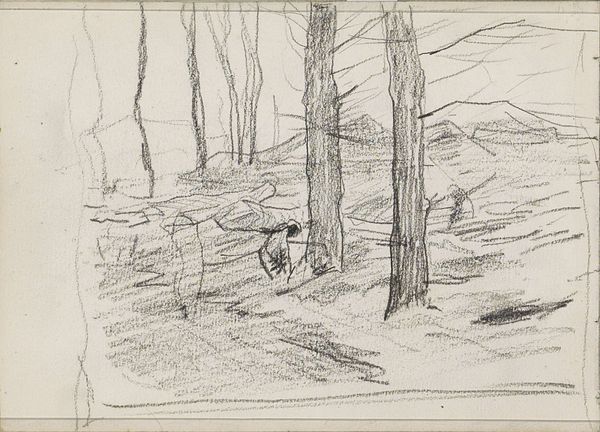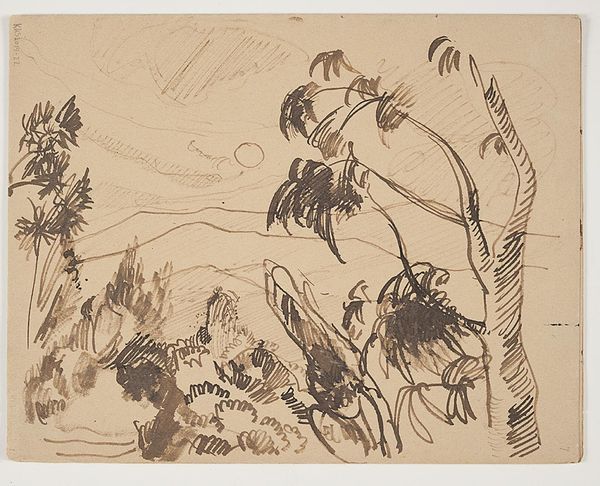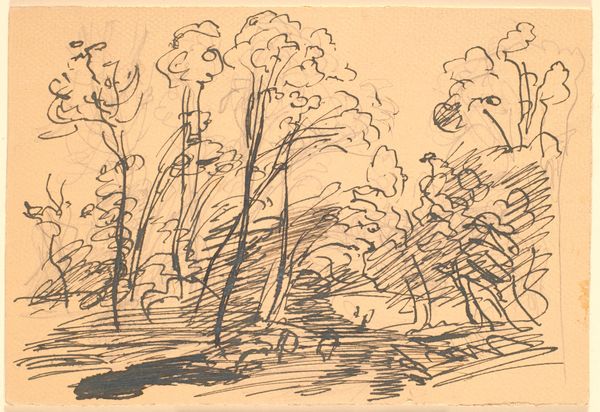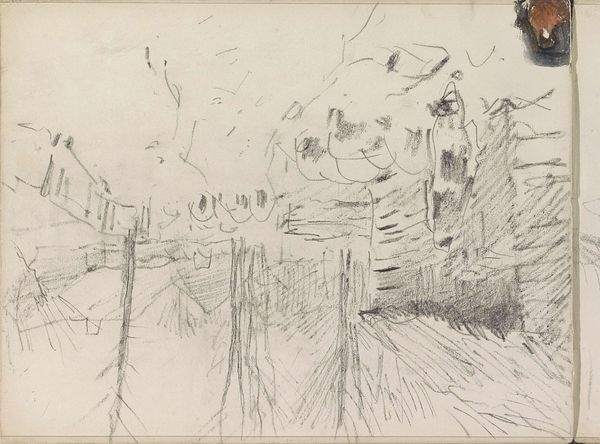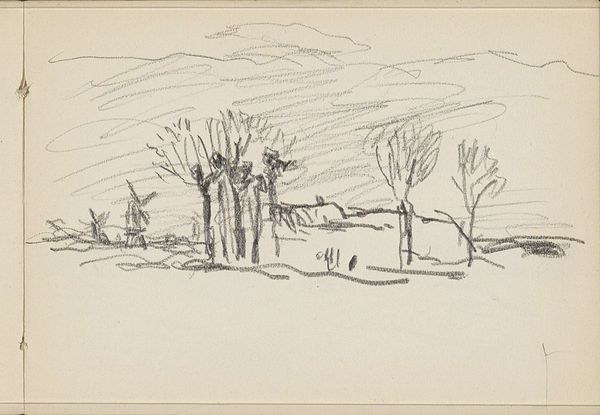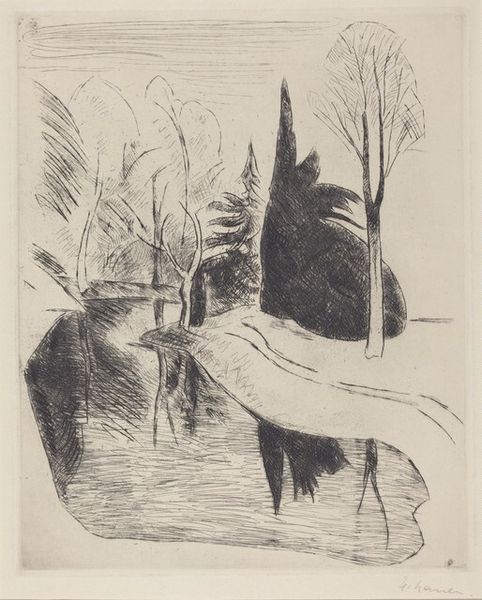
drawing, pencil
#
drawing
#
landscape
#
pencil
#
line
#
realism
Copyright: Rijks Museum: Open Domain
Curator: Here we have "Knotwilgen langs een vaart," or "Pollard Willows Along a Canal," possibly from 1908, by Alexander Shilling. It's a drawing, rendered in pencil. What's your immediate impression? Editor: Hmmm. Bleak, somehow. The stark lines give it a very raw, almost unfinished quality. The pollard willows… they look like scraggly old men guarding a secret. Curator: It's interesting that you call it unfinished. Looking at the materiality of the drawing itself—the texture of the paper, the density of the graphite—reveals a lot about Shilling's process. The work has characteristics common in studies of that period and displays effective economy of line, possibly because sketching on site for later painting demanded working swiftly. Editor: Definitely see what you mean about the immediacy. You can almost feel the artist capturing a fleeting moment in time and trying to convey this specific experience of…place, I guess. Maybe not a 'pretty' one, more about the feeling of nature pressing around you. Curator: Considering its presumed date, we might explore this work in the context of increasing industrialization across Europe and how that spurred many artists to re-evaluate their relationship to the landscape. The materials themselves - graphite, paper - are cheap and easy to transport. Was Shilling actively engaged with capturing working landscapes over scenes of idyllic grandeur? Editor: The more I look at it, the more I'm struck by its mood. The trees could represent so many things… endurance, resilience in a world quickly vanishing. Makes me want to wrap up in a warm blanket and contemplate. Or just have a very large glass of wine. Curator: Yes, or consider whether a tension is created in this study due to its simple medium that’s depicting willows: frequently coppiced specimens valued for their production of withies which historically fueled local economies across this area. Editor: The economy of line gives it so much impact. Well, I see a whole other story emerging now, beyond that initial bleakness. I think, next time I am surrounded by that kind of scenery, I’ll have to reconsider what I assumed that meant to the humans busy building a landscape for daily work! Thanks for illuminating the subject matter. Curator: A valuable perspective—to think about material culture informing subjective reading—and on that note I encourage all to consider how artistic exploration and the re-use and management of commonplace commodities such as willow impact our collective response to this humble image.
Comments
No comments
Be the first to comment and join the conversation on the ultimate creative platform.
